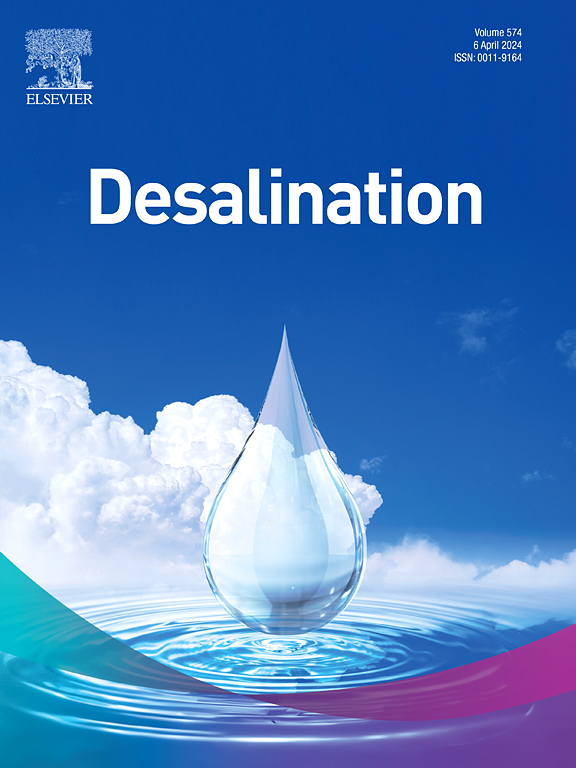An enhanced dechlorination method of solid waste incineration fly ash washed by recyclable organic solvent and water mixtures
IF 8.3
1区 工程技术
Q1 ENGINEERING, CHEMICAL
引用次数: 0
Abstract
The enrichment of chloride salts in municipal solid waste incineration (MSWI) and hazardous waste incineration (HWI) fly ash seriously restricts the resources utilization of fly ash. Water washing is a convenient means of dechlorination while the large water-to-solid ratio results in large water consumption and high energy consumption for subsequent brine concentration. In the present study, an enhanced method was proposed to reduce the water-to-solid ratio during washing by introducing organic solvents as dechlorination auxiliary solvents. The results showed that the addition of water-soluble solvent formed a new solution system with water, increasing the ability to dissolve salt per unit of water by 25.15 %–94.53 %. The polarity differences between organic solvents and the water affected the dissolution of salts in the mixed system, and the mixture of lower polar water-soluble solvent indicated better dechlorination efficiency. Besides, the mutual solubility of the lower polar organic solvent and the water decreased with the concentration of salts increasing, and the minimum Cl− concentration of the brine layer was 2.68 M after liquid-liquid separation. Finally, the concentration of Cl− in brine layer was naturally concentrated to 2.68–3.53 M, which was increased by 125.63–144.13 %, and the energy consumption of brine concentration was greatly reduced.
用可回收有机溶剂和水混合物洗涤固体废物焚烧飞灰的强化脱氯方法
城市固体废物焚烧(MSWI)和危险废物焚烧(HWI)飞灰中氯盐的富集严重制约了飞灰的资源化利用。水洗是一种便捷的脱氯方法,但由于水固比大,后续的盐水浓缩耗水量大、能耗高。本研究提出了一种改进方法,通过引入有机溶剂作为脱氯辅助溶剂,降低水洗过程中的水固比。结果表明,水溶性溶剂的加入与水形成了新的溶液体系,使单位水溶解盐的能力提高了 25.15 %-94.53 %。有机溶剂与水的极性差异影响了盐在混合体系中的溶解,极性较低的水溶性溶剂的混合物具有更好的除氯效率。此外,随着盐类浓度的增加,极性较低的有机溶剂与水的互溶性减小,液液分离后盐水层的最小 Cl- 浓度为 2.68 M。最后,盐水层中的 Cl- 浓度自然浓缩到 2.68-3.53 M,提高了 125.63-144.13 %,盐水浓缩的能耗大大降低。
本文章由计算机程序翻译,如有差异,请以英文原文为准。
求助全文
约1分钟内获得全文
求助全文
来源期刊

Desalination
工程技术-工程:化工
CiteScore
14.60
自引率
20.20%
发文量
619
审稿时长
41 days
期刊介绍:
Desalination is a scholarly journal that focuses on the field of desalination materials, processes, and associated technologies. It encompasses a wide range of disciplines and aims to publish exceptional papers in this area.
The journal invites submissions that explicitly revolve around water desalting and its applications to various sources such as seawater, groundwater, and wastewater. It particularly encourages research on diverse desalination methods including thermal, membrane, sorption, and hybrid processes.
By providing a platform for innovative studies, Desalination aims to advance the understanding and development of desalination technologies, promoting sustainable solutions for water scarcity challenges.
 求助内容:
求助内容: 应助结果提醒方式:
应助结果提醒方式:


